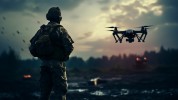Search
Using the filters to the left, click your selection, it will become bold and filter the results, click it again to remove that filter.
It has become somewhat par for the course, in any discussion of professional reading in a military context, to quote United States Marine Corps General James Mattis (retired). Mattis commands much respect, both within the US military and in the Australian Army. He is often viewed as the modern-day soldier-scholar par excellence . His books frequently appear on Professional Military Education (PME) Reading Lists, and his quotes on the importance on military literacy are often thrown about. This is because …
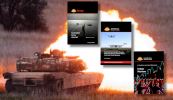
AAJ Vol XXI, Number 3 Timeline Deadline for article submissions: Monday, 24 March 2025 Planned Publication Date: November 2025 Submission form at the bottom of this page Description Have you ever wanted to write on issues important to Army? Is there something that Army could ’do’ better? Or is there something you wish people understood about Army now and in the future? The Australian Army Research Centre (AARC) invites submissions for the third edition of the Australian Army Journal (AAJ) for 2025. The AAJ …
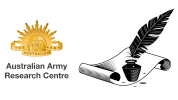
Land Power’s Contribution Australia stands at a pivotal moment in its military strategic policy with the National Defence Strategy 2024 (NDS) adopting deterrence by denial and calling for the evolution of the Australian Defence Force (ADF) into a truly integrated force. The aim is to maximise the ADF’s deterrence, denial, and response options in the Indo-Pacific region. However, the NDS lacks specificity on crucial aspects, such as the who, where, when, why, and how the ADF will harness military power …
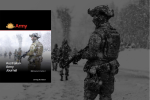
Land-Based Maritime Strike in the Red Sea Crisis At the base of the Gulf of Suez, a tiny non-state actor is demonstrating how area denial tactics can create a strategic dilemma for larger and more capable nations. Since October 2023, the Houthi movement has used a combination of unconventional naval and land-based maritime strike (LBMS) attacks to restrict passage through the Red Sea. Though individual attacks have been ineffective, the broader threat has been impactful, reducing shipping throughput by …
![Oil tanker on calm waters in the distance with the sunset in the top two thirds of the image. Source: [10:55 pm] Matthew Struthers JACOBS (Guest) Pixabay user: Lingualpirat-Glenn (https://pixabay.com/users/lingualpirat-glenn-9811466)](/sites/default/files/styles/scale_height_100/public/sea-5475892_1280.jpg?itok=5GeeAGwv)
2(AS) Division PME Program 'The Defence Strategic Review and National Defence Strategy: Implications and Outcomes for the Australian Army' Magic weapons, political influence and resistance The National Defence Strategy (NDS) and Integrated Investment Program (IIP) recognises strategic urgency and Australia’s challenging strategic circumstances. [i] Those circumstances, described in the Defence Strategic Review (DSR) [ii] and the NDS itself explicitly call out Russia, China, North Korea and Iran as …

2(AS) Division PME Program 'The Defence Strategic Review and National Defence Strategy: Implications and Outcomes for the Australian Army' Crafting a National Defence Strategy is an immensely challenging task. At its core, it requires a theory of victory – or a theory of success – so that practitioners can deliver it. [1] Within military education institutions and elsewhere, the development of strategy is often reduced to a formula that allocates available resources against efforts. This is wrong-headed …

In February 2022, Russian forces streamed into Ukraine under what Russian President Vladimir Putin called a ‘special military operation’ to achieve objectives including ‘denazification, demilitarisation and its neutral status’. The early weeks of the conflict found Russia struggling to achieve its objectives despite many military experts’ predictions that Ukraine would fall quickly. Over two years later, the conflict continues, and uncrewed aerial systems (UAS) have made significant contributions to the …
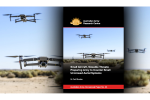
A Comparative Analysis of Amphibious Operations in the Pacific and European Theatres of the Second World War Within Occasional Paper Number 23 , author Richard Bushby compares WW2 Allied amphibious operations in the European and Mediterranean theatres with those conducted in the central Pacific theatre. The article further examines the relationship between amphibious techniques and broader concepts of strategy and operational art. … Occasional Paper 23 release - From The …
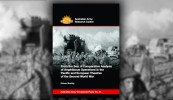
MSMEs crank up Australia-India defence Partnership Over the past decade, the Australia-India defence partnership has undergone a significant transformation, evolving into a comprehensive strategic partnership in response to mutual security concerns, notably those arising from China's assertive regional posture. This partnership has been further strengthened by regular Summit meetings, the institution of the Australia-India Foreign and Defence Ministerial Dialogue, and strategic military agreements. These …
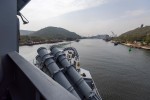
Lessons Learnt from the War in Ukraine Introduction Many may not realise that the origin of Unmanned Aerial Vehicles (UAVs), commonly known as drones, dates back almost a century, while modern UAV technology has been rapidly developing in civilian and military contexts over the past four decades. Drones represent the intersection of two important trends in military technology – the precise nature of weapons and the rise of robotics which, when combined, are flown remotely at no risk to a pilot and capable …
